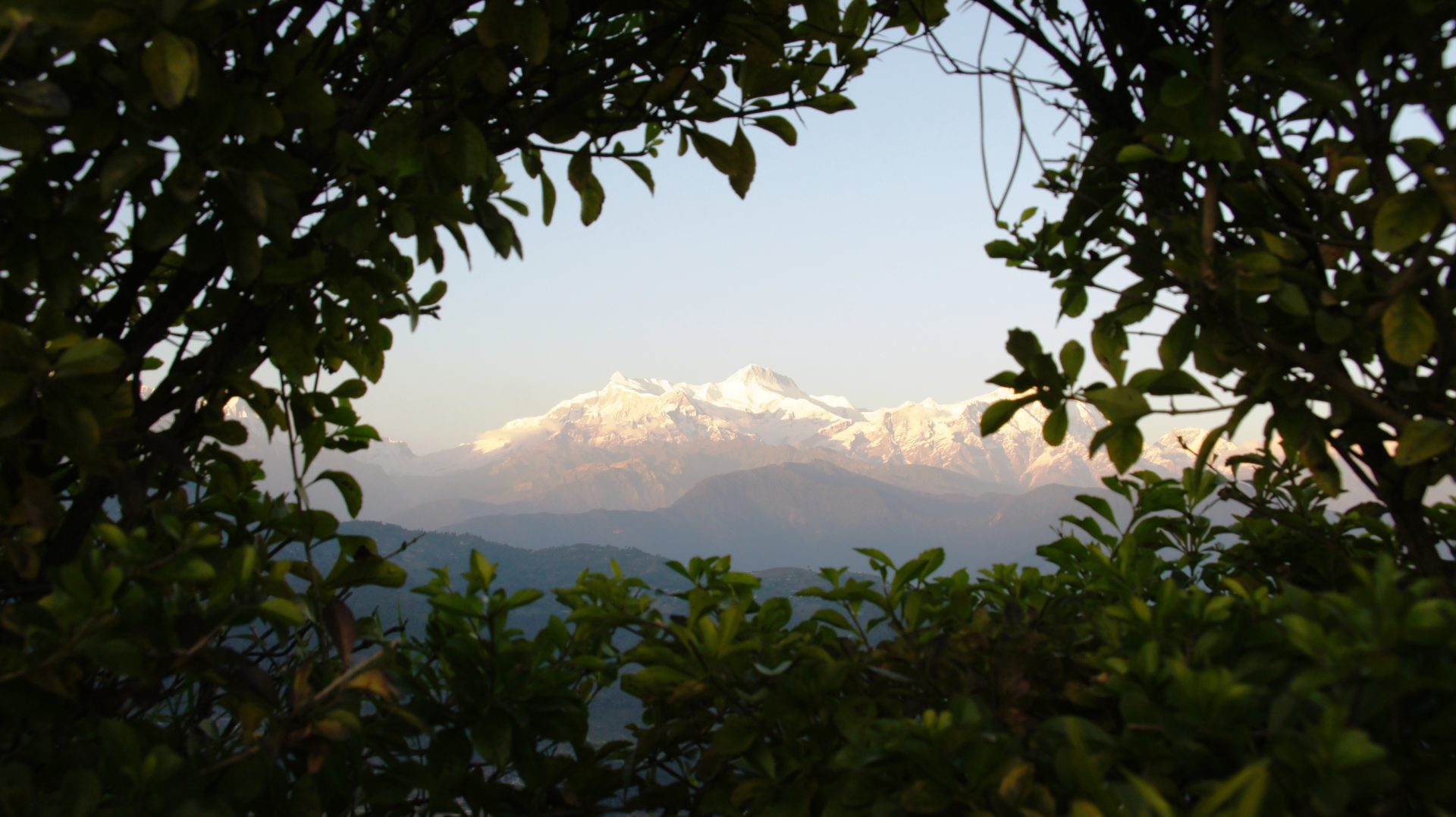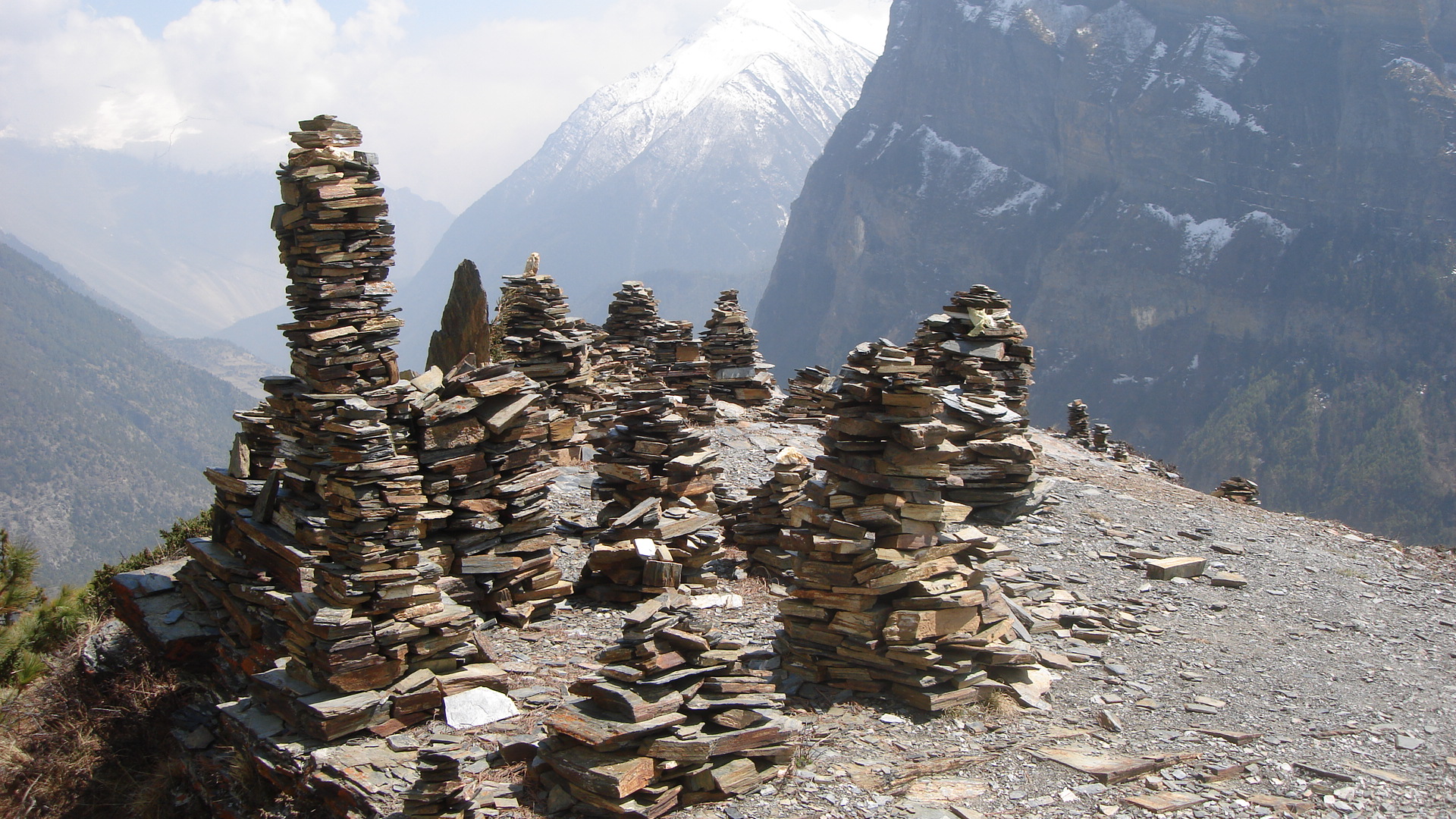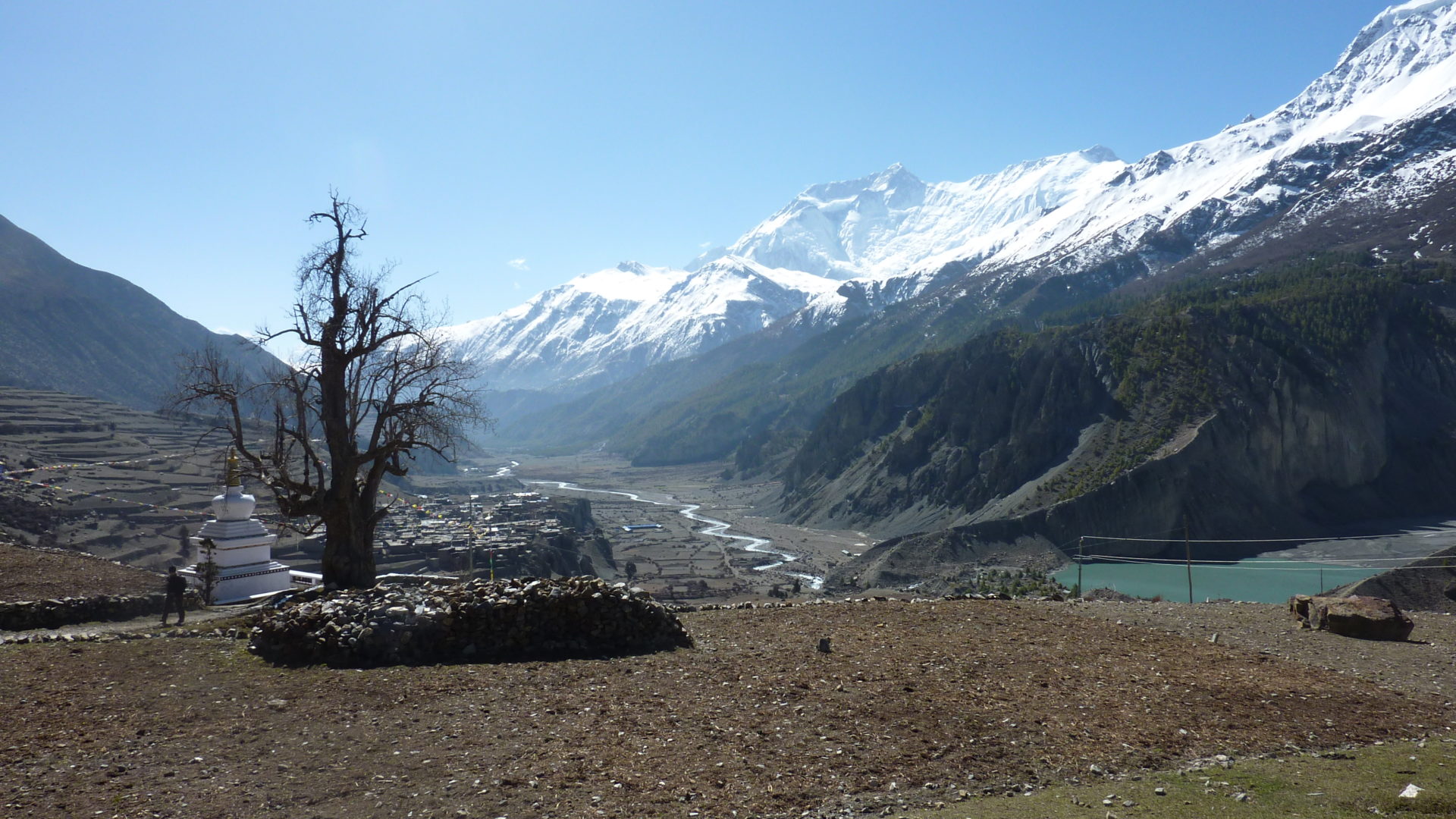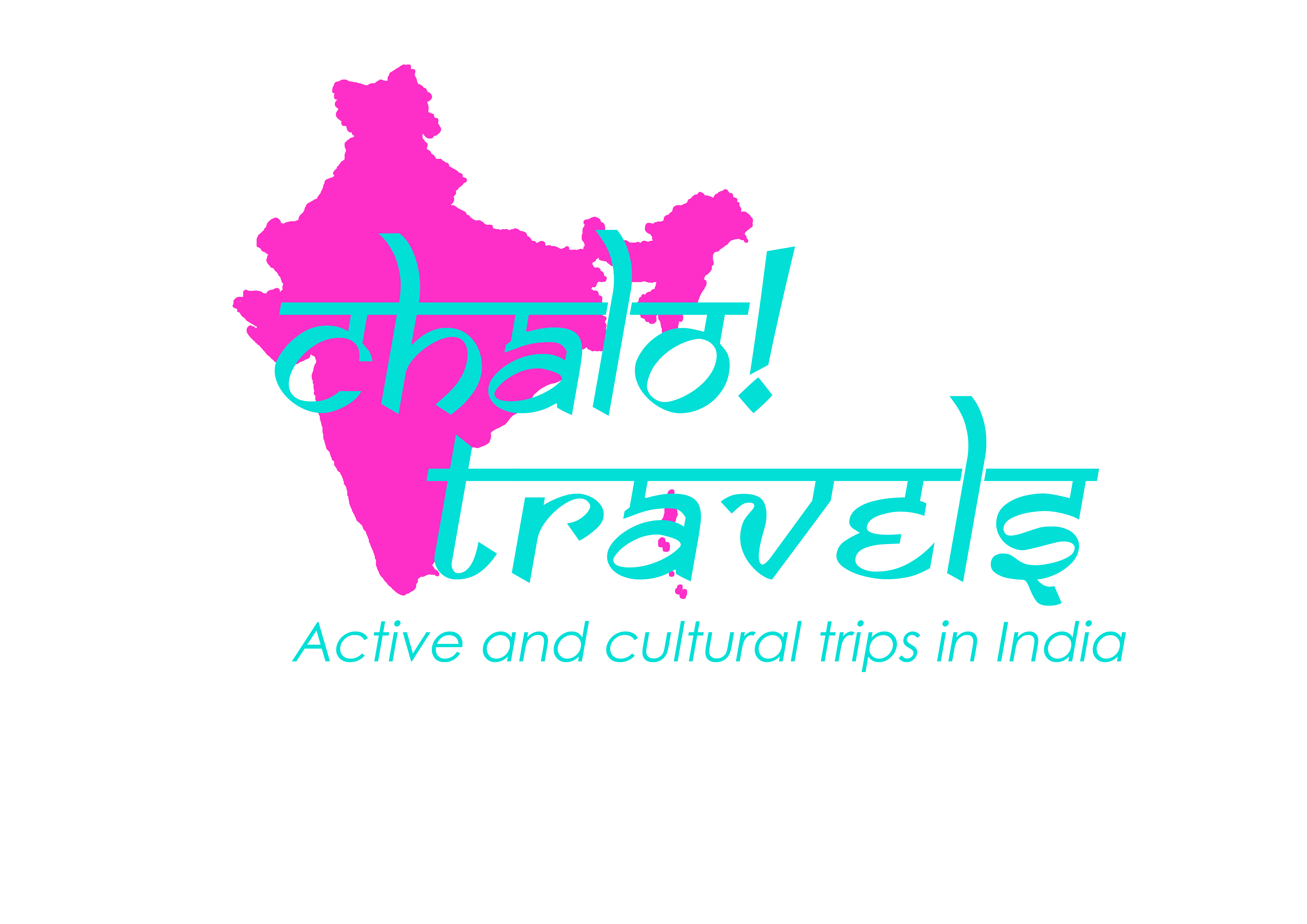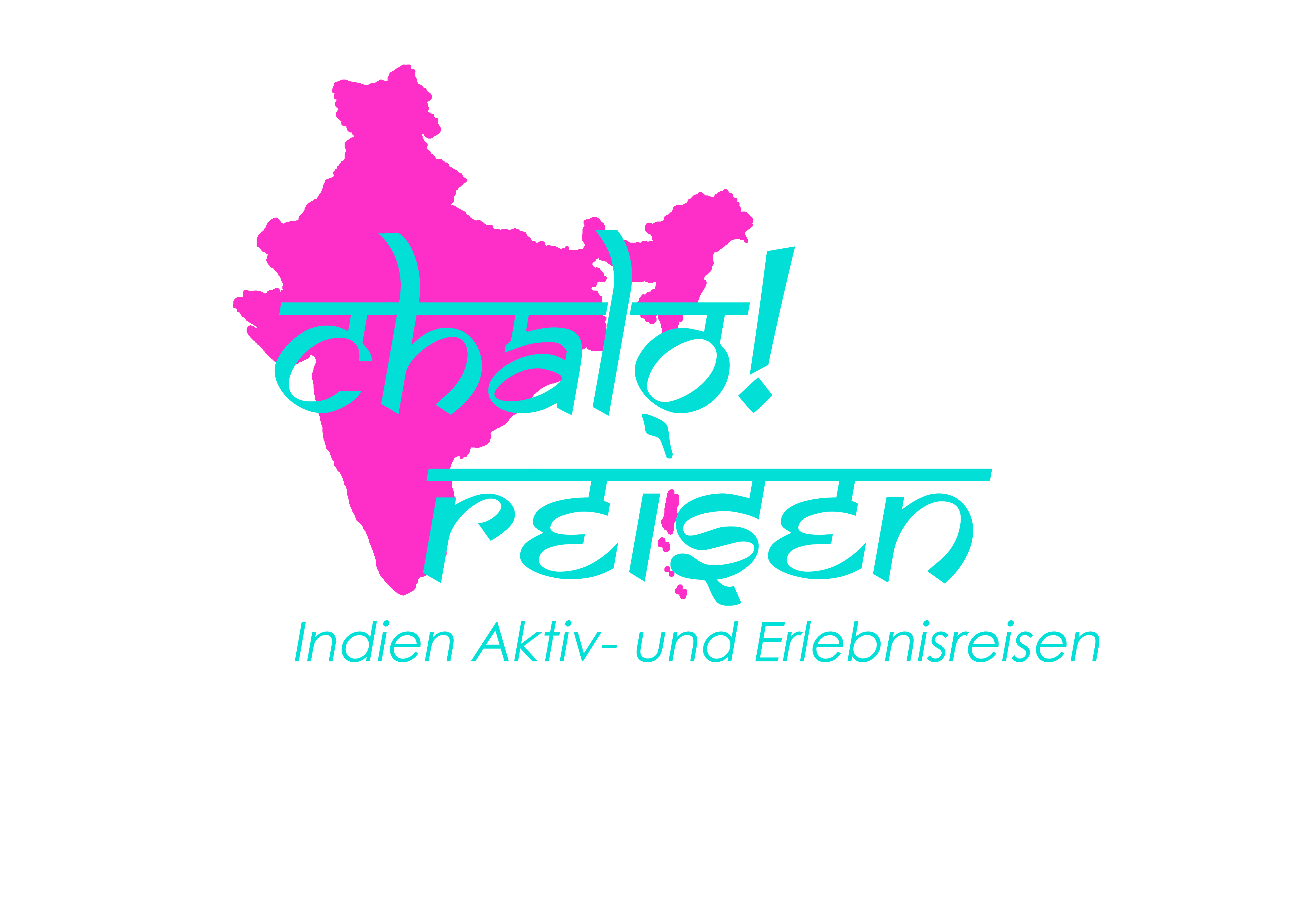- Sport & Abenteuer Reisen
- Fahrrad & MTB
Overview
The trekking route around the 8000 meter high Annapurna is one of the most beautiful, classic trekking routes in the Himalayas. Due to the expansion of the jeep slope through the Maryandi Valley, the region is easily accessible by bike.
The bike tour starts in Bulbuhle and leads to the snowy glacier world of Annapurna. After crossing the Thorong-La Pass, we only go to the monastery village of Muktinath. From Muktinath through the desert-like landscape to the border of the forbidden kingdom of Mustang.
Then on to the apple capital Marpha, whose fruit and apricot schnapps are notorious far beyond the borders of Nepal. From Marpha we head to the tropical areas of Tatopani, known for their hot sulfur springs and oranges.
The tour ends in the subtropical Pokhara. In addition to the great mountain scenery, you will get to know the ethnic and religious diversity of the inhabitants, old caravan paths, eternal flames, pilgrims, mystical rituals, monasteries, prayer flags, hospitality and the rustic coziness of a warm oven.
Program
Day 01 Day of arrival
Airport pick-up and transportation to your hotel.
During your stay in Kathmandu you will have time to get to know the fascinating Buddhist and Hindu temples and shrines and the ancient local traditions.
One night in a hotel, overnight stay with breakfast 3 stars
Day 02 Thamel and surroundings of Kathmandu
To test our bikes, we can take a small ride into the rural surroundings of Kathmandu. In the evening you meet for your traditional welcome dinner.
One night in a hotel, overnight stay with breakfast 3 stars
Day 03 Besisahar, altitude 820 meters, bus 6 hours travel time
In the morning we take the bus to Besisahar, the entrance to the Annapurna region.
Day 04 Jagat, Annapurna, height 1,300 meters, 5 hours riding time
The mountain bike tour starts in the morning on the jeep slope through the valley of Marsyandi Khola. The trail leads through the valleys on the edge of Annapurna, past waterfalls, small villages and through flowering forests. Travel distance 30 km, ascent 1200 Hm, approx. 80% mobile.
One night in the lodge/teahouse, full board
Day 05 Charm, height 2,670 meters, 5 hours riding time
The landscape changes, the forests become lighter, the piste is flanked by fields and orchards. Flat roofs on the houses show less rainfall. Travel distance 40 km, ascent 1500 Hm, approx. 80% mobile.
One night in the lodge/teahouse, full board (VP)
Day 06 Manang, altitude 3,621 meters, 4 hours riding timeIn the morning, on the way to Pisang, the 3000 mark is exceeded. In Pisang (3185 m) we will take our lunch break with a view of the ice-armored Annapurna north flank. Later in the afternoon we reach Manang (3540 m), the administrative center and the last large settlement in the upper Marsyandi Valley, where we stay for two days. Travel distance 20 km, ascent 750 hm, approx. 80% mobile.One night in the lodge/teahouse, full board
Day 07 Altitude adjustment in Manang, altitude 3,596 meters, trekking 3 hours
The rest day in Manang is a good way to do altitude training for the Thorong La.
It is recommended, to a trip to the “100-rupee-lama”, which gives its blessing for crossing the Thorong-La in a monastery cave about 400 m above Manang (walking time approx. 3h).
Alternatively, you can trek to the opposite viewpoint at Gangapurna Lake below the Gangapurna Icefall (walking time approx. 2-3h).
If you don’t feel like it and would rather relax from the trek, you are welcome in the lodge ????
Alternatively, you can stay in Ngawal the day before and hike to Manang today.
One night in the lodge/teahouse, full board
Day 08 Thorong Phedi Basecamp, height 4,450 meters, 5 hours riding time
From Manang the high valley divides and we first drive up the Gangapurna valley to Shree Kharka (4080m). Now we follow a slightly ascending single trail, at the highest point a Dowhill leads down to the river. Now follows a sliding passage up to the main path. Alternatively, you can stay in Ledar or Yak Karka. Riding distance 20 km, ascent 1000 Hm, approx. 60% mobile.
One night in the lodge/teahouse, full board
Day 09 Thorong-La Pass, height 5,416 meters and further to Muktinath, altitude 3,800 meters, 5 hours riding time
This night is short as the next stage has to be approached very early. From noon a cold wind blows over the pass and it can become uncomfortable. When the pass height is reached at 5416 meters, a break can be taken in the small tea house.
Now begins an ultimate downhill: lap 1650 meters altitude, to the famous pilgrimage site Muktinath, partly mobile, with some sporty passages. riding distance 20 km, ascent 1100 Hm, approx. 40% mobile.
One night in the lodge/teahouse, full board
Day 10 Tukche, height 2,590 meters, 5 hours riding time
In Muktinath, the temples can be visited in the morning. The temple is probably one of the most important pilgrimage sites in Nepal and is estimated to be 1000 BC. 108 gargoyles, eternal flame and the pilgrimage rituals will captivate you.
In the early afternoon, the route leads over a jeep runway to Kagbeni.
Kagbeni is located at the beginning of the famous Kali Gandaki Gorge between the eight-thousand-metre Annapurna and Dhaulagiri. Through the deeply cut valley of Kali Gandaki we bike on the slopes to Tukche.
Travel distance 35 km, 100% mobile.
One night in the lodge/teahouse, full board
Day 11 Tatopani, height 1,064 meters, 5 hours riding time
On today’s stage, the gorge of Kali Gandaki becomes steeper and narrower. In Tatopani the last night in the mountains is planned. If you still want to, you can visit the hot springs in Tatopani. Please pack bathing equipments. Travel distance 40km, 100% mobile.
One night in the lodge/teahouse, full board
Day 12 Beni, height 829 meters, 3 hours riding time, then on to Pokhara, altitude 820 meters, car/taxi 5:00 hours travel time in private car or taxi
The last short stage leads through the narrow gorge to the “Local Road”. Travel distance 25 km, 100% mobile. The route to Pokhara is then covered by bus or jeep.
Total distance 115 km.
One night in a hotel, overnight stay with breakfast 3 star
Day 13 Pokhara, altitude 820 meters
Rest or reserve day in Pokhara.
One night in a hotel, overnight stay with breakfast 3 stars
Day 14-16 Thamel, height 1,300 meters, bus 7 hours travel timeWith the tourist bus you will return to Kathmandu in about 7 hours. Lunch break on the way in a local restaurant.
Alternatively, you can fly from Pokhara to Kathmandu in 25 minutes.
The rest of the stay is free.
Hotel in Thamel or at Bodnath.
Two nights in the hotel, overnight stay with breakfast
Day 16 Day of departure
Drive to the airport / Departure
Services
General
- A dinner together to get to know and prepare the tour
- All fees and permits for entry to the national parks
- Small guided sightseeing tour in Kathmandu
- Mountain bike
Transfers
- Shuttle service from Kathmandu Airport to your hotel and back
- All trips required for this tour by car, taxi or bus
Accommodation/catering
- Hotel in Kathmandu, 3-star standard
- Hotel in Pokhara, 2-3 star standard
- All overnight stays in the lodges during the trek with early stucco/lunch/dinner “a la carte”
Staff
- Porter for private luggage
- English-speaking guide for the bike tour
Not included
DrinksTip for your crew if you liked itSingle supplement € 90 for four nights in Pokhara and or Kathmandu
Highlights
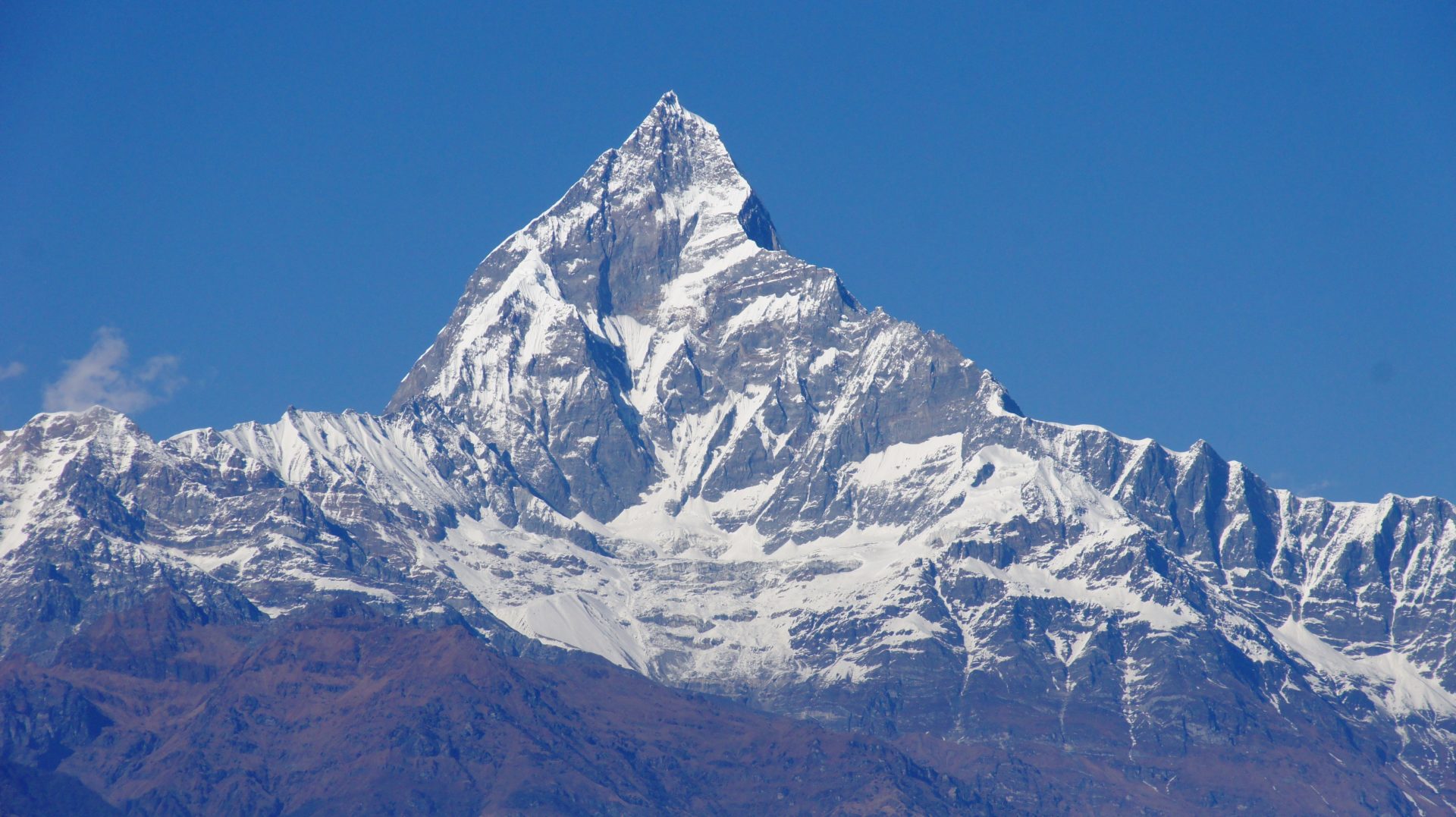
Annapurna 
Tea House 
Hot Springs 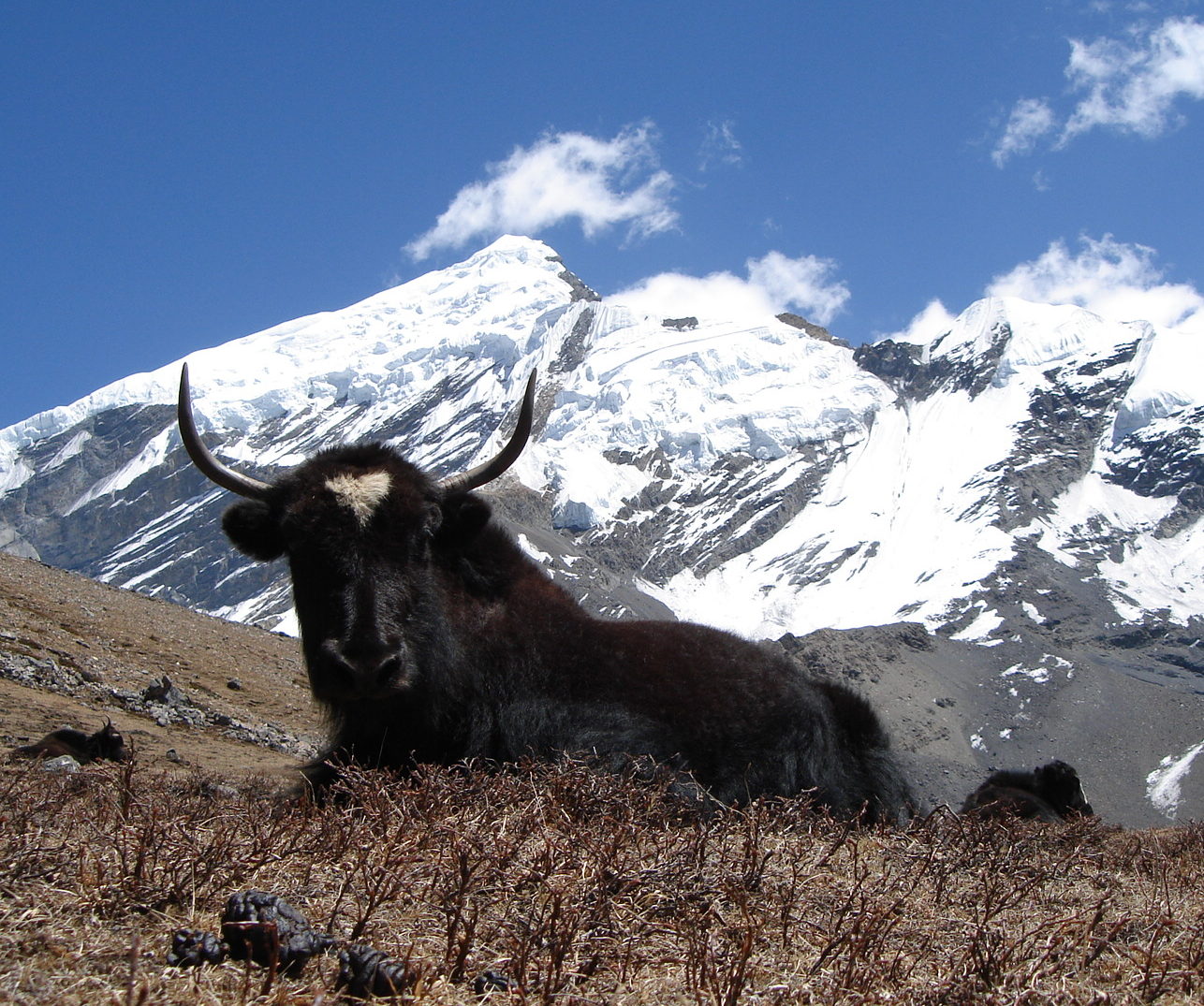
Yak 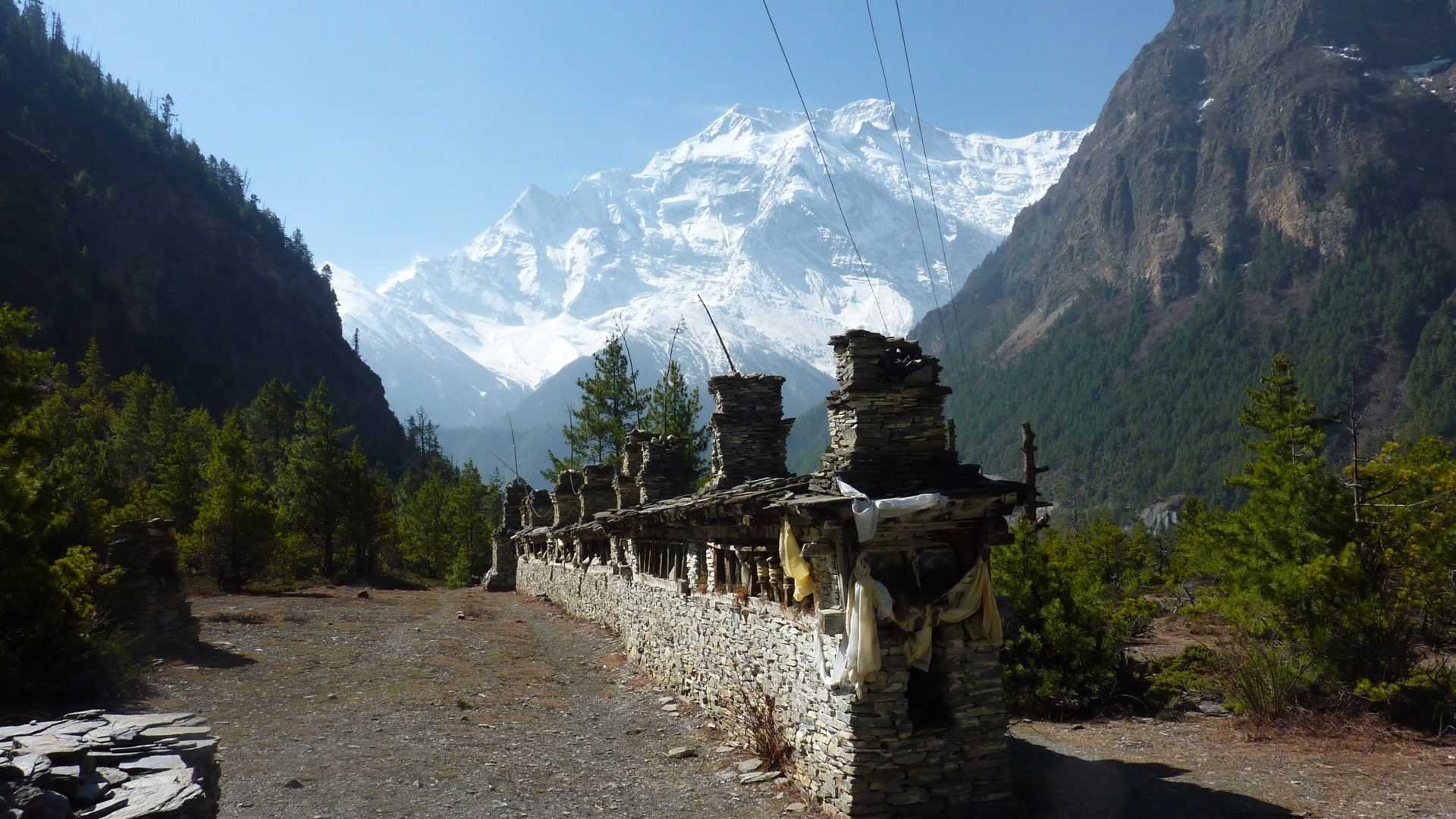
Chorten
Prices and Dates
Best times: April-May and October-November
from 2 participants: 2550 €/Person
single supplement charge (only Kathmandu and Pokhara): 150 €
When using your own mountain bike, the price is reduced by 100 € per person
Fixed departure tour:
25.04.- 10.05.2026
31.10. – 15.11.2026
Tour Info
Requirements
A challenging bike tour, whereby not the distances, but the altitude up to 5400 meters makes it difficult. Some of the trails are quite technical, partly you have to push them. Again and again there will be jeep slopes and days on which the complete route can be ridden.
The stages are designed in such a way, that they are easy for sporty mountain bikers with days for acclimatization between bike days.
Tour Facts
- Private tour, trekking difficult
- Lodge Trek: 16 days
- Mountain bike and trekking: 9 days full board
- Pokhara: 2 nights/breakfast
- Kathmandu: 4 nights/breakfast
- Maximum height: 5,416 meters
- Best travel times: March – May and Sept.- Nov.
- Packing list Himalaya Tours
Entry requirements and permits
A passport valid for at least half a year and a tourist visa is required to enter Nepal. Visas can be applied for at the Nepalese embassy before the trip, but are also available directly upon arrival at the airport in Kathmandu. All you have to do is fill out an application form and pay a fee. The amount depends on the planned duration of the stay and the number of entries and departures into the country. It also makes sense if you bring a larger number of passport images. Although photos can also be taken in the airport in a suitable size, you will need them anyway for the trekking permits. These are required in all areas not listed in the visa itself. You will receive the trekking permits at the immigration office in Kathmandu. The fee also depends on the length of stay and the respective area. You should not try to get on the road without the right permits, as there are numerous controls in Nepal and the penalties are quite high.
Travel time
The best travel times for Nepal are the months from March to June and from September to November. During this time, the weather is usually dry and mild. The most beautiful is in autumn after the monsoon, as the air is particularly clear during this time. This is especially important if you not only want to hike, but also take impressive photos. Even in winter, the sky is often bright blue, but since the temperatures at this time of year are often below freezing and many passes are closed, only very experienced travelers should explore the country. The monsoon season in summer is rather unsuitable for trekking due to the heat and humidity.
Hygiene and health
As in most Asian countries, Nepal is not expected to have a European standard of cleanliness. You should therefore follow the usual precautions an only eat thoroughly cooked food. You should avoid raw fruit and wash your hands as thoroughly as possible before eating to reduce the risk of transmission. Water should always be boiled not only for drinking, but also for brushing your teeth, otherwise you can become infected with worms and various intestinal diseases. Vaccinations are not mandatory for Nepal, but can be meaningful individually. It is best to get advice from your doctor before travelling.
Accommodation
Even away from the capital, the network of paths in Nepal is very well developed. At regular intervals, tea houses can be found along these paths, often with attached accommodation. So you don’t necessarily have to spend the night in the wild while trekking. Since the rooms are usually not heated and bed linen is usually not provided, a sleeping bag is necessary even if you want to be accommodated exclusively in tea houses. However, hotels or guest houses in the true sense of the term are rarely found. Camping, on the other hand, is possible almost all over the country and is subject to hardly any restrictions.
During the trek you usually sleep in typical lodges, also called Guesthouse or Tea house. Lodges are comparable in function to mountain huts in the Alps. Many suppliers often speak of “strictly tested” or of “high quality standards”. Let us not fool ourselves. Lodges are simple accommodations run by their Nepalese families. Many are really very cute, others have an unbeatable view or maybe cook a good Dal Bhat.
They all have one thing in common: a lodge offers you a good place to eat and sleep.
Lodges are very simple and their construction is mostly similar. There is always a large food/common room, in the middle of which there is usually an oven. In the colder regions, of course, the most popular places are those around this oven. In these colorful oven rounds, consisting of Nepalis and trekkers from all over the world, you can make many contacts. Lodges have their very own and really interesting atmosphere
The individual rooms are always located in this common room. The rooms are almost always furnished the same. The facility consists of two beds. In the easily accessible or lower regions there is usually also light in the room. A private bathroom or shower in the room are rather rare, or only available in the main trekking areas such as in the Annapurna region from time to time.
Basically, it can be said that the higher or further away, the easier the accommodation and for the overnight stay in a lodge a sleeping bag is recommended everywhere.
Meals
During the trek you usually eat in the lodges. There is very simple but really good food. Some lodges have a reputation for certain things that are cooked particularly well there. Just ask our guides if you have an appetite for certain things.
Much is cooked with rice, pasta and potatoes. Most of the time there is everything that your own vegetable garden gives.
For allergy sufferers, eating during the trek is a real cure!
- Staples simply cooked well
- Gluten, lactose free food
If you are allergic, you know best what gets you well. In case of doubt, you must of course ask before eating or inform your cook at tent camps.
People who suffer from lactose or gluten intolleranzen always report positively to us about the food and its tolerability during the trek.
Responsible traveling
Even in areas that are off the beaten track, pollution is now a major problem. Therefore, make sure to pack your garbage again after a rest and take it with you. Along all routes, there are always opportunities to dispose of waste of all kinds. However, you should avoid disposable packaging if possible, as the country is overwhelmed with the amount of waste generated. In addition, you should only explore Nepal with all the necessary permits and officially licensed guides, as the proceeds directly benefit the preservation of the national parks and the necessary infrastructure.
Equipment and supplies
The equipment you need depends, of course, on the travel time and the area you want to explore. The most important thing is good and suitable footwear as well as clothing adapted to the climate in sufficient numbers. A sturdy and spacious backpack and a warm sleeping bag are also included in the basic equipment. In Kathmandu, however, you can still make additional purchases without any problems, as many shops specialize in trekking travelers. You can also buy everyday items such as soap and toilet paper as well as food on site. Only on more remote routes can it be useful to take larger supplies with you.
Travel pharmacy
On the other hand, a good travel pharmacy is indispensable, which you should have with you at the time of your arrival. In any case, it includes:
- Disinfectant
- Bandages
- Insect repellent
- Sunscreen
- Cold sea
- Painkillers
- Broadband antibiotics
- Means against diarrhea
- Water disinfection tablets
Your doctor can also give you other recommendations that are tailored to your personal constitution and medical history.
Your day backpack
In a typical day pack there are usually the following things:
- Drinking bottle(s)
- Handkerchiefs (toilet)
- Camera
- Load of biscuits for the little hunger
- A fleece in case it gets cold
- If rain is to be expected, a light rain jacket
- Small first aid
Always carry along:
- Your passport
Recommended vaccinations
A trip to Nepal does not require any special vaccinations. However, you should consult your Doctor about three months in advance, unless you are sure about the condition of your vaccination protection.
The following standard vaccinations should be available:
- Diphtheria
- Hepatitis A
- Hepatitis B only risk groups or long-term travelers.
- Polio
- Tetanus
The bike trekking pharmacy
There are no pharmacies on the Trek or in the hinterland.
Most of the time you take everything for free. But – if something happens, you are happy to have a good pharmacy with you.
Our mountain guides are equipped with the most important. But you shouldn’t experiment with your own health.
It’s enough for someone from your group to take over this job. Not everyone needs the complete list.
Our recommendation:
- Painkillers
ibuprofen 600 mg. No blood thinners like aspirin. In case of injuries, the bleeding stops worse! Furthermore, ibuprofen also has an anti-inflammatory effect. - Imodium/coal tablets
- Sore throat tablets
- Remedy for abdominal pain/nausea
- Sports algae such as Diclofenac, MobilatGel etc. (high doses)
- Antibiotics (helpful but not a must)
-Amoxicillin 1000 mg in tonsils, lungs, sore throats or severe colds
-Metronidazole in margins/intestinal tract, amoeba, extreme diarrhoea
-Ciprofloxacin as a broad-spectrum antibiotic in all other inflammations. - Disinfectant or iodine ointment
- Dressings, staples, bubble patches
- Association scissors
- Sterile disposable gloves
- First aid blanket (silver foil)
Some of these medications are prescription-only and only taken as directed by the doctor. In addition to the areas of application and the dosage of the individual medications, please consult your family doctor beforehand.
He will explain exactly what to consider when administration.
Acute Mountain Sickness, altitude sickness
“Acute Mountain Sickness” does not have to be sick.
As the altitude increases, the air pressure decreases and thus also the oxygen content per cubic meter of air. At an altitude of 5,000 metres, there is only half as much oxygen in the air as at sea level.
The most important zones are:
- 0 -3,000 meters: Generally problem-free zone.
- 3,000 – 5,100 meters: Altitude problems may occur, complete acclimatization possible.
- 5,100 – 7500 meters: Only incomplete acclimatization possible. Continued decline in forces.
- over 7,500 meters: Death zone. The body consumes itself. Only short stay possible.
AMS is often the result of carelessness and misbehavior. Every body can get used to very high altitudes. You just have to give him enough time and rest.
What is AMS
Acute Mountain Sickness occurs as a result of poor acclimatization of the body to the height. It can no longer absorb enough oxygen from the air and be fed to the organism.
AMS can occur at altitudes above 3,000 meters. Most often, the condition deteriorates overnight while sleeping and the following day the typical symptoms occur:
exhaustion, severe headache in the neck area, dizziness, hallucinations, lack of sleep and appetite, vomiting, dry cough with ejection, blue lips, discolored nail beds
Ignoring the symptoms can be life-threatening.
Possible consequences:
- Hape
Occurrence: 1-3%
High lung edema. Water accumulation in the lungs. Water is pressed into the lungs by high blood pressure. - Hace
Occurrence: 1%
Altitude brain edema. Swelling of brain mass due to the accumulation of fluid and dead brain cells. Rather rare. At altitudes above 3,500 meters possible, usually only from 5,000 meters.
How do I recognize AMS?
It is not easy to differentiate the beginning of AMS.
There is no point in panicking at every sign of headache or loss of appetite.
Nor is there any point in constantly trekking with fear of AMS.
- 80 percent of all climbers complain of headaches from time to time.
- It is normal to feel exhausted or uncomfortable in the stomach after a hard day with many ascents and descents.
- It can always happen that the stomach rebels due to unusual eating and drinking behavior.
- It is also normal that your performance decreases with increasing height, your resting pulse rises and you breathe much faster than on a beach holiday.
All this is normal.
But with all this you feel good and at the latest the next morning you can get started again.
AMS is best noticed, as you know yourself best. You should not hide it if your well-being deteriorates permanently over two days.
False greed according to the motto: “I’m fit, this will happen again” can end in life-threatening. Share your problems and talk about them with the group and the guide.
How do I avoid AMS?
There are a few simple rules.
- Do not ascend too fast (max. 300-500 meters per day).
- Avoid overexertion. Slow, slow is the trick
- Every 1,000 meters of altitude an additional rest day.
- Always drink a lot (no alcohol).
- Any serious disturbance is AMS unless something else has been clearly identified.
- Only continue to rise symptom-free.
Our tours are strictly planned according to these criteria.
Our mountain guides are trained in the recognition and handling of AMS.
What to do at AMS?
There is only one answer
- Descend
Immediately descend to the height, where the sick man was well for the last time.
The symptoms will subside immediately there. Overnight at this altitude and try the ascent slowly after a day or two (if the sufferer feels thereafter).
The continuation of the ascent usually leads to the worsening of the condition at the latest at the next overnight stay.
Diamox as a prophylaxis ?
Diamox (acetazolamide) reduces the internal pressure of the vessel, e.g. for treatment with too high internal pressure. The opinions of the world of specialists and doctors are sometimes different. While in the USA all doctors prescribe Diamox prophylactically during high mountain tours, in Europe this is dispensed with. There are long-term studies conducted in the Everest region in 2008. In short, Diamox helps to adjust to height. So far, I think everyone agrees.
Our experience and recommendation with Diamox is as follows:
- If no altitude sickness is known so far, do not take Diamox to get to know your own limits.
- If altitude sickness has occurred earlier, take acetazolamide from 500 meters below the last occurrence. 250mg in the morning and at noon.
- Drink a lot
When compromising your travel pharmacy, please contact your Doctor for this.
How many rupees?
With the credit card you can pay very well in Kathmandu and Pokhara.
- The official means of payment in Nepal is the Nepalese Rupee (NPR).
- In recent years, the rule of thumb 100 NRP has been around 1 euro.
- You can find the current conversion rate here
What do I take with me ?
Our recommendation is as follows:
- Your debit card with secret number
- A credit card
- A little euro cash in case of need (250.00 Euro)
Get money
Tip: Nabil-Bank (green-white logo) – withdrawal up to 30,000,00 rupees possible!
In big cities like Kathmandu, you get money everywhere with your debit card + secret number (as in Germany). It should be noted that many banks only allow withdrawals every 24h to 100.00 euros. This is not enough for the holiday fund. An exception is the Nabil Bank, which allows withdrawals up to just under EUR 300.00.
The courses at ATM machines are currently good and up-to-date. Lift off “sufficient” than several times little. In most cases, the banks charge you a minimum fee per withdrawal. This is about 5.00 euros.
Whether the ATM gives you money with your debit card, you can tell by the fact that a MAESTRO sticker is attached.
If you have a credit card such as Mastercard, Visa etc. with secret number, you can also use it for cash withdrawals at the ATM. About the fees for cash withdrawals with an EC or credit card, ask a banker of your trust beforehand ?
Euro cash can always be exchanged at various exchange offices. Again, the fee is usually higher than for the ATM with debit card. You can compare when you’re there.
Note on credit and debit cards
In any case, we recommend that you check with your bank before leaving if your card is activated abroad (not Europe) and what the limit for cash withdrawals is.
Take money back
Taking NPR abroad is not allowed.
Either you spend everything in Nepal or exchange it back in Nepal in Euros.
Money during mountain biking
In the hinterland there is hardly any possibility to get fresh money. You should take enough money with you in advance, e.g. from Kathmandu. Cash like euros can also be exchanged in the mountains, but the price is usually not so sparkling.
Our experience is that you spend almost no money on the trek. Our tours are incl. three meals a day + overnight free. All you need is money for:
- Coke, water, fanta, etc.
- Candy
- Possibly a small errand
As a guideline, you can say that 15.00 to 20.00 Euro per day and nose are enough on our tours. If there is something left afterwards, it can be spent wonderfully in e.g. in Kathmandu or Pokhara.
You should also take a reserve as emergency money in euros.
Negotiate
When shopping in Nepal, it should always be well negotiated beforehand.
As in almost all countries, prices in Nepal are not fixed.
It is recommended never to accept the first prize. The exception is: supermarkets, restaurants and everything official.
With all other offers you should always negotiate.
Nepal is a country of extremes
The airport Lukla at 2,850 meters. Is approached on sight.
Every trip in Nepal is a little adventure. For this reason, we are making some demands on you. Please read the following text first.
Tour programs
Due to adverse circumstances – e.g. closures of sightseeing objects, holidays, bad weather, the health of the participants or unfavourable conditions during trekking, etc., route changes, program changes or delays may occur.
Of course, we and your tour guide will always strive to reach all program items to your full satisfaction. However, we cannot guarantee that our tenders will be adhered to accurately. We ask for your understanding.
Construction
In Kathmandu, especially in the district of Thamel, construction is always underway. Construction site noise and disturbances in the city are the order of the day. Since the local planning is quite spontaneous, we cannot guarantee that the hotels we have booked will not be affected.
Please inform yourself about your destination and what to expect on the spot before travelling.
Flying in Nepal
The domestic flights booked by us are operated with the following airlines:
- Yeti, Tara Air
- Agni Air
- Sita Air
- Nepal Air
- Simrik Air
- Goma Air
- Buddha Air
Domestic flights in Nepal may be postponed by days due to limited air space capacity, weather conditions, technical or other reasons. In the past, some domestic airports in Nepal have been closed for several days. In these exceptional cases, we will try, with your cooperation, to move the tour to other regions or to organize the transport by land. The risk of delay and failure of these flights is at the expense of all participants.
In the event of delays lasting several days, all participants are responsible for re-booking their return flight to their home country at least 48 hours in advance. Of course, we are at your disposal with our help.



